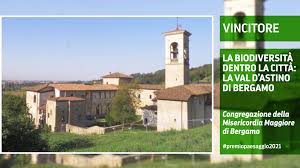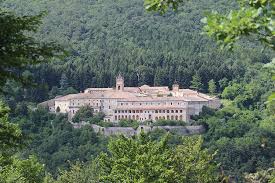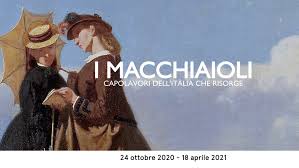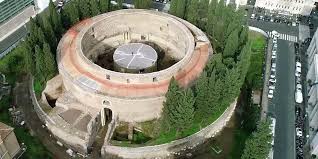
The church bells of Venice ran out in chorus at 4 pm last week on to salute what is believed to be the 1600th anniversary of the city's founding. According to tradition, the date refers to the laying of the first stone of the Church of St. James at the Rialto on the 25th March 421.
The Covid pandemic has held up many of the planned celebrations (some 230 proposals right up to 2022) are pending. However, the city council has confirmed that two major events will go ahead as planned – the Salone Nautica (Boat Show) at the Arsenale (29th May - 6th June 2021) and the Architectural Biennial starting on the 22nd May 2021.
Preparations for the major celebrative exhibition “Venetia 1600. Nascita e Rinascita” (Venice 1600. Birth and Rebirth) is also planned to take place at the Ducal Palace from the 11th September 2021- 27th March 2022.
The long-awaited ban on colossal cruise ships entering the lagoon and dwarfing the Church of San Marco should also come finally into effect, to the joy of environmentalists and conservationists who have been petitioning for years to have the ships directed away from the monuments and treasure of this unique city. Until a suitable tourist port can be built, the ships will now be diverted to the container harbour at neighbouring Porta Marghera, hopefully from 2022.

The Istituto Giannina Gaslini of Genoa, Italy's third largest paediatric hospital, has launched the “Space for Children” project, an interactive digital game sponsored by the ESA Europa (European Space Agency) to help young children cope with the additional anxiety caused by the Covid epidemic.
The games, available on a free app for smartphone or tablet, consist of four video games, geared at children 7-9 and 10-12 age groups, created by HYPEX, an Italian start-up interactive video designer.
Paediatricians and psychologists working with young patients at the Gaslini hospital have reported increasing psychological problems in the children in their care, including irritability, sleep difficulties, worries and separation anxiety that have escalated due to the additional difficulties caused by the pandemic.
The Gaslini is not new to initiatives aimed at alleviating hospital stays for young patients and their families. In summer, the Institute opens its “Gaslini Beach”, a specially reserved seaside playground connected directly from the hospital via an underpass.
The Gaslini is a public research institute, founded in 1938. It averages 50,000 recoveries per year, including 600 foreign children from 60 different countries.
Info: Tel. +39.010.56361 www.gaslini.org www.hypex.nl

Valle d'Astino, on the outskirts of Bergamo (Lombardia) has won the top award in the National Landscape Contest 2020-21. The 60 hectare valley, lying among the hills on the city doorstep has been subjected to a long re-qualification process, spearheaded by the Fondazione della Miseracordia Maggiore (MIA) (Foundation of Greater Mercy) a charitable organization dating from 1265.
The Foundation bought the valley, which also contained an ancient ruined monastery, in 2007. The area was completely overgrown and neglected, with the earth impoverished due to years of exclusive cultivation of maize, and the Foundation gradually began to transform it into the present Eden, with garden allotments, organic farms, vineyards, fruit orchards and herb gardens. Part of the valley has been taken over by the Botanical Garden Lorenzo Rota of Bergamo, which cultivates 1,200 varieties of plants.
The old monastery, with the frescoed 16th century Church of the Holy Sepulchre and the cloister, has now been restructured and transformed into a multi-cultural centre for music, theatre and films.
The National Landscape Award qualifies Valle d'Astino as Italy's candidate for the European Landscape Prize, instituted in 2008 by the Council of Europe, for the best territory re-qualification and landscape recovery initiative.
Info: info@visitbergamo.net Tel. +39.035.320402 www.premiopaesaggio.beni.culturali.it

Coronavirus restrictions forced Parma, Capital of Culture 2020, to move many of its events and exhibitions to 2021, including the major exhibition at the Ducal Colorno Palace of the vast 18th century collection of china and ceramics gathered by the Duchess Luisa Elisabetta of France and her husband Filippo di Borbone.
The collection contains rare pieces from the leading factories of Europe, such as Meissen, Sévres, Vincennes, Chantilly, Doccia and Capodimonte, and was dispersed after the Unification of Italy and the suppression of the Duchy of Parma. The exhibition has gathered together many of the most precious porcelain figurines and decorated plates that are now part of the collections of Italian museums and institutions like the Quirinale Palace (official Residence of the President of Italy), the Royal Museum of Torino, the Uffizi Gallery and the Villa Medici Museum of Poggio di Caiano.
Princess Luisa Elisabetta, known as “Babette”, daughter of Louis XV of France, was a passionate collector, purchasing many of the most refined pieces during her frequent visits to Versailles. Her husband, whom she called “Pippo”, shared her enthusiasm and her tastes. The couple, who had both come from two of the wealthiest and most luxurious royal courts of Europe, set themselves the task of modernizing and refining the gloomy and rundown residence allotted them in Parma, as demonstrated in the letters and archive documents also on show in the exhibition, containing items like proposed architectural plans and furniture designs, engravings and a cookery book of 18th century recipes.
The exhibition is due to re-open on the 15th May and, Covid permitting, will run until the 19th September 2021.
Info: Tel. +39.0521.312545 www.reggiadicolorno.it

The Italian Ministry of Culture has put a definite ban on the use of the 12th century Trisulti Abbey as a base for the Dignitatis Humanae Institute (DHI) set up by Benjamin Harnwell, considered to be the European representative of former White House strategist and noted populist Steve Bannon.
The DHI took over the lease of the abandoned monastery in 2017 on condition that they would fund restoration and upkeep, and that it would be used exclusively for academic and cultural purposes. The extremist political ideologies accredited to the DHI founders, however, alarmed the local population as well as the Cultural Ministry, which has been locked in a legal battle to revoke the lease for the last three years.
The Abbey is one of the finest Carthusian monasteries in Lazio, first founded in 996. Crowning a hilltop in the Ernici Mountains and surrounded by oak forests, for centuries it was a sought-over haven of respite for pilgrims on the way to the Holy Land. The present building dates from 1204 with later baroque modifications to the Abbey Church of St. Bartholomew, where visitors can admire “The Glory of Paradise” ceiling painting by Giuseppe Caci (1683). Its gardens are laid out in the classic Italian style with geometric beds delimited by box hedges. It also possesses a fine 18th century pharmacy decorated with trompe-l'oeil frescos and grotesques. Another of its claims to fame is the invention of the popular liqueur Sambuca, invented by the monks and infused from local herbs.
The last four monks, all elderly, were transferred from the Abbey a few years ago, leaving it empty. It is now looking for a new occupant who will respect its unique historic and spiritual character as “a place of peace”.
Info: Tel. Ciociaria Turismo +39.0775.211417 www.collepardo.it

The theme of the Italian Pavilion at the Dubai Expo, due to go ahead in October 2021, is “the Beauty that Connects People”, conveying the concept of beauty as a universal unifying force that transcends all cultures and races.
The Dubai Expo is the first global event planned to take place at the end of the pandemic and will run until 31st March 2022. The Italians are determined to shine, with a sparkling innovative pavilion that will focus on the vision of sustainable development as prospected in the United Nations agenda for 2030, promoting new ideas on the use of water resources in agriculture, the cultivation of arid land, the defence of biodiversity and valorization of the benefits of the Mediterranean diet.
The Italian pavilion, designed by Architects Carlo Ratti, will cover an area of 3,500 sqm. with a height of 27m, and will be entirely powered by state-of-the-art aeration and illumination systems showcasing Italian scientific and technological knowhow. Special architectural features include a “Skywalk” passageway, constructed from recycled materials like coffee grinds, orange peel and recovered plastic, while Italy's diverse scenic beauties and creative skills, filmed by Oscar winner Gabriele Salvatores, will provide Expo visitors with a continuous and fascinating panoramic backdrop.
Info: italyexpo2020.it

Palazzo Zabarella in Padua is staging an exhibition of the works of a group of Italian artists considered to be the forerunners of the French Impressionist movement. The Macchiaioli, as they were dismissively called (inspired by the word “Macchia”, or “patch, blot”) emerged in the second half of the 19th century, after the Unification of Italy. The movement is less well known than the subsequent proliferation of Impressionism in France, a lacuna which the Padua exhibition will contribute to rectify.
Many of the group had fought in the Garibaldi campaign. They were revolutionaries and idealists, who rejected the conventional academic canons of the art of the period.
The movement, which was concentrated largely in Tuscany, grouped artists like Giovanni Fattori, Silvestro Lega, Telemaco Signorini, Odoardo Borrani, Vincenzo Cabianca and others, who met up in the celebrated Caffe Michelangiolo in Florence to exchange ideas and discuss politics. Most barely scraped a living with their paintings, but they were supported by wealthy patrons, like art critic Diego Martelli, who threw open his house at Castigliocello for their use, and the English noblewoman, Isabella Falconer, whose villa at Collegiliato near Pistoia, was an esteemed cultural hub.
The Macchiaioli artists painted scenes of country life, the market place and the seashore, strictly en plein air, in order to capture the true quality of natural light. They thus anticipated the works of artists like Monet, Van Gogh and Gauguin.
The exhibition“I Macchiaioli: Capolavori dell'Italia che Risorge” (Masterpieces of Renewed Italy) runs until the 18th April 2021.
Info: Tel. +39.049.8753011 www.zabarella.it

A thousand year-old plane tree, growing in a pine forest at Curinga (Catanzaro, Calabria) hopes to win the prize for the European Tree of the Year contest 2021.
The “Gigante Buono” (Good Giant), as it is called by the locals, has already scooped the “Best Loved Tree in Italy” award. Believed to have been planted by the monks of the nearby 10th century Hermitage of Sant'Elia, the giant rises to a height of 31.5 metres, with a trunk of 14.75 metre circumference. The hollow in its base can contain up to 10 people and during its long life it has often provided shelter for shepherds, wayfarers and brigand bands.
Source: www.lacnews24.it

Rome's newest visitor attraction is now open after a fourteen-year closure for restoration work. The 13,000 sqm burial monument of the Roman Emperor Augustus, constructed in 28 BC after his victory over Antony and Cleopatra and allegedly modelled on the lost tomb of Alexander the Great in Egypt, has been virtually closed to the public for the past 80 years, with no access whatsoever permitted since 2007.
The circular Mausoleum, which stands above the Tiber, next to the Ara Pacis, Augustus' Altar of Peace, has monumental dimensions, with a diameter of 90 meters. The inner chamber is now open to the sky, surrounded by walls that are only a third of the original height.
Restoration was largely funded by the Italian telecommunications company TIM (6 million euro), with additional 4 million euro contributed by the City of Rome and the Italian cultural Ministry.
Entrance is free until the 21st April, the date of Rome's alleged 2,774th birthday. After it will continue to be free for Rome residents only. Booking is essential with “all sold out” already looming.
Info: Tel. 060608 www.mausoleodiaugusto.it www.sovraintendenzaroma.it
<< Previous ... 2 ... 4 ... 6 ... 8 ... 10 ... 12 ... 14 ... 16 ... 18 19 20 21 22 23 24 25 26 27 28 29 30 31 32 33 34 35 36 37 ... 39 ... 41 ... 43 ... 45 ... 47 ... 49 ... 51 ... 53 ... 55 ... 57 ... 59 ... 61 ... 63 ... 65 ... 67 ... 69 ... 71 ... 73 ... 75 ... 77 ... 79 ... 81 ... 83 ... 85 ... 87 ... 89 ... 91 ... 93 ... 95 ... 97 ... 99 ... 101 ... 103 ... 105 ... 107 ... 109 ... 111 ... 113 ... 115 ... 117 ... 119 ... 121 ... 123 ... 125 ... 127 ... 129 ... 131 ... 133 ... 135 ... 137 ... 139 ... 141 ... 143 ... 145 ... Next >>




